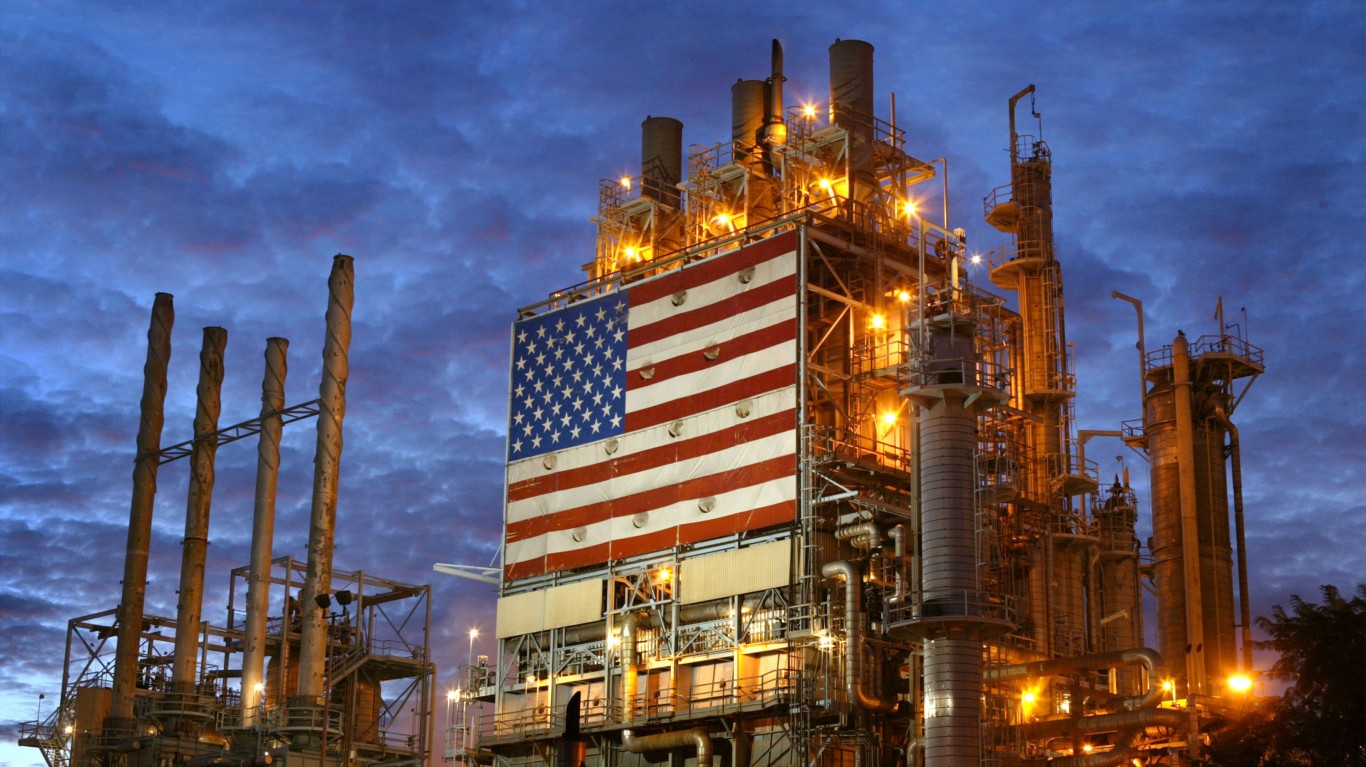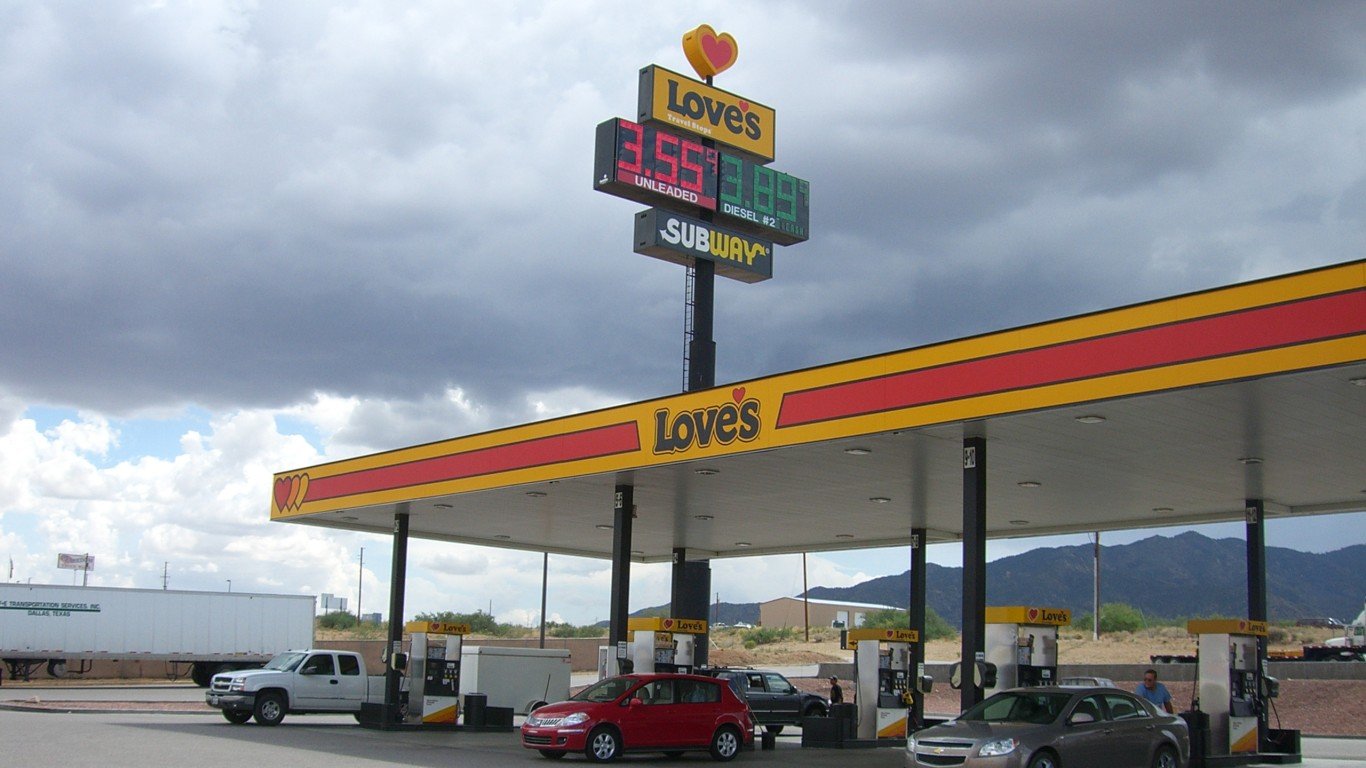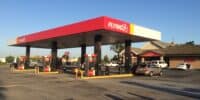

It has been a tough time to be an investor buying stocks in the energy sector. With many of the oil and gas stocks having seen massive losses, there also have been bankruptcies and some larger companies that have seen their shares indicating more risks ahead. Some of the former large exploration and production companies may even find themselves at risk of being delisted the New York Stock Exchange or Nasdaq.
24/7 Wall St. wanted to review the top oil and gas stocks by market cap to see if there are any opportunities at all. With so many environmental, social and governance (ESG) investing strategies and with so many people starting to avoid anything at all tied to fossil fuels, or so they think, there seems to be a situation forming in which the valuation and historic discounts just might not matter to investors.
The problems for “Big Oil” are well known, and they are not new. A slowing global growth story is a challenge on demand, the drop in oil prices has wrecked the economics of some projects, there have been production forecast cuts and layoffs, and there is that pesky secular trend of alternative and renewable energy that threatens the long-term existence of the oil and gas industry. There is no point bothering to mention that certain politicians would like to issue death warrants to the entire industry. Short sellers have also been more active of late.
When looking at investment opportunities among sectors that are down and out, it sometimes feels hard to look objective. After all, oil and gas stocks have been disasters for some time. The SPDR S&P Oil & Gas Exploration & Production ETF (NYSEARCA: XOP) is down close to 16% so far in 2019, and that is down 50% from its 52-week high and down nearly 75% from its all-time high in mid-2014.
What matters in August of 2019 is that Exxon Mobil Corp. (NYSE: XOM) and Chevron Corporation (NYSE: CVX) have now both reported earnings. Their reports follow some other high-profile production cuts and layoff announcements within the oil patch in the days and weeks prior to their reporting. These two Dow Jones industrial average components have a combined market value of more than $530 billion, and Chevron’s dividend yield of 3.9% is a full percentage point lower than that of the larger Exxon. Still, Chevron shares were last seen outperforming the larger rival with a gain of 11% (versus 2%) year to date. Over the past year, Chevron’s return has been a loss of 1%, compared with a 13% loss for its larger rival.
Trading at $122.21, Chevron has a consensus analyst target price of $137.81 that implies upside of 12.8%, and it also comes with a 3.9% dividend yield at the current price. Chevron has a 52-week trading range of $100.22 to $127.60 and a $232 billion market cap. Its shares are up by 11.7% so far in 2019.
The independent research firm Argus reiterated its Buy rating on August 13, but the firm lowered estimates and lowered its target price to $94 from $104 after the post-earnings analysis. At $70.28 a share, Exxon has a consensus target price of $82.83. That implies upside of 17.9%, and it also comes with a 5.0% dividend yield. Exxon has a 52-week range of $64.65 to $87.36 and a $297 billion market cap. Its shares are up by 2.1% so far in 2019.
Occidental Petroleum Corp. (NYSE: OXY) has decided that it wants to be an acquirer to get ahead when times are tough. Occidental is acquiring Anadarko Petroleum Corp. (NYSE: APC) in a deal that deemed expensive by Wall Street. Even Warren Buffett’s backing looked very expensive as part of the deal. Occidental’s shares were at $68 in April, but after the news that Anadarko was favoring its bid, the shares were down closer to $55, and they were last seen down another $10 since then.
Occidental Petroleum was assigned an Underweight rating at JPMorgan on August 13, and the firm assigned a mere $50 target price that is likely to lower the consensus target at the next refresh date. trades at $44.16, and its consensus target price of $60.06 implies upside of 36.0%. It also comes with a 7.0% dividend yield. Occidental’s 52-week range is $44.01 to $83.35, and it has a $39.5 billion market cap. Shares are down by 26.7% so far in 2019.
EOG Resources Inc. (NYSE: EOG) has lost more than 26% of its value just since April, far worse than its performance since the start of the year. On August 13, Citigroup maintained its Buy rating but lowered its price target down to $116 from $120; and a day earlier Wells Fargo reiterated its Outperform rating and raised its target to $103 from $101. Trading at $78.94, EOG Resources has $113.24 consensus target price that implies upside of 43.5%, and it also comes with a 1.5% dividend yield. EOG Resources has a 52-week range of $74.84 to $133.53 and a $45.8 billion market cap. Its shares are down by 10.7% so far in 2019.
ConocoPhillips (NYSE: COP) has spent most of its time trading between $40 and $47 over the past five years, and the company’s dividend simply isn’t high enough on the surface to entice new buyers. Ahead of earnings in July, BofA Merrill Lynch raised its rating to Buy from Neutral and assigned a $75 price objective, but that was about a week after Morgan Stanley kept its Overweight rating but cut its target to $81 from $84 and after JPMorgan maintained its Overweight rating and cut its target to $80 from $83.
Conoco was last seen trading at $54.21, and its consensus analyst target price of $77.44 implies upside of 42.9%. It has a 2.3% dividend yield and a 52-week range of $52.30 to $80.24. The market cap is $60.2 billion. Its shares are down by 14.8% so far in 2019.
Baker Hughes, a GE Company (NYSE: BHGE) needs to distance itself from the shadow of General Electric Co. (NYSE: GE). This stock is down a whopping 60% since 2016, and that 3% or so dividend yield is only up that high because its stock has dropped so much.
At $23.69, Baker Hughes has a consensus target price of $30.04, which implies upside of 26.8%. It also comes with a 3.0% dividend yield. Baker Hughes has a 52-week range of $20.09 to $34.52 and a $24.6 billion market cap. Its shares are up by 8.9% so far in 2019.
Schlumberger Ltd. (NYSE: SLB) remains the king of oil and gas services, but its stock is down almost 70% over the past five years.
Schlumberger’s price of $34.86 and its consensus target price of $49.06 implies upside of 40.7%. The dividend yield is 5.2% at the current price. Schlumberger has a 52-week range of $33.86 to $65.74 and a $48.2 billion market cap. Its shares are down by 5.0% so far in 2019.
Halliburton Co. (NYSE: HAL) has been such a poor performer that it’s currently less than a $20 stock. It is down over 50% from its 52-week high and is down close to 70% over the past five years. That’s even with it having repurchased many of its shares along the way.
At $19.67 a share, the implied upside to Halliburton’s consensus target price of $32.65 is 66.0%. And the dividend yield is 3.7%. Halliburton has a 52-week range of $19.10 to $42.57 and a $17.2 billion market cap. Its shares are down by 27.0% so far in 2019.
Between Exxon and Chevron, Exxon has a greater implied upside with analysts calling for nearly 18% compared to Chevron’s 13%.
Among Occidental, EOG and Conoco, analysts are calling for EOG to have the greatest upside going forward at 43.5%.
As for Halliburton, Schlumberger and Baker Hughes, analysts are picking Halliburton as the top dog in the group with an implied upside of 66%.
If some of those price targets sound too high with too much upside in them, it may mean that the analyst community hasn’t lowered its price targets enough. And maybe one analyst was right about low-risk refiners being the safe harbor in energy.
It is hard to get excited about the oil and gas sector after the trading history has been so poor in recent years. The sector seems to lose more favor every time that the price of oil tanks, but the rallies always seem to look and feel very disappointing. And the carnage in shares equals to a certain extent with master limited partnerships, services companies, equipment makers and so on. All that can be said for great upside and opportunity now is that oil and gas would perhaps be the next largest contrarian bet after coal.
Essential Tips for Investing: Sponsored
A financial advisor can help you understand the advantages and disadvantages of investment properties. Finding a qualified financial advisor doesn’t have to be hard. SmartAsset’s free tool matches you with up to three financial advisors who serve your area, and you can interview your advisor matches at no cost to decide which one is right for you. If you’re ready to find an advisor who can help you achieve your financial goals, get started now.
Investing in real estate can diversify your portfolio. But expanding your horizons may add additional costs. If you’re an investor looking to minimize expenses, consider checking out online brokerages. They often offer low investment fees, helping you maximize your profit.
Thank you for reading! Have some feedback for us?
Contact the 24/7 Wall St. editorial team.
 24/7 Wall St.
24/7 Wall St.


